Da Nang – A Beautiful City on the Coast of the East Sea
In the attempt to develop large cities in Vietnam, Da Nang has emerged as a special phenomenon. Some people even consider it “the star of the Han River”. That’s why in recent years the press has commented that the strong development in urban planning, economy-society and tourism-services has given Da Nang the moniker “A Small Singapore” in Central Vietnam.
City of dream
Before 1975 there was a large military base of the United States in Da Nang. Beyond the Han River there were a lot of sand dunes with military posts and temporary houses with corrugated iron roofs. At that time the present-day 29th of March Park was a rubbish dump of US military forces. A vast sandy area stretching from the Hue T-Junction – the northern gate of Da Nang City, to the foot of the Hai Van Pass was home to fortifications, deserted cemeteries and several temporary houses of the local people.
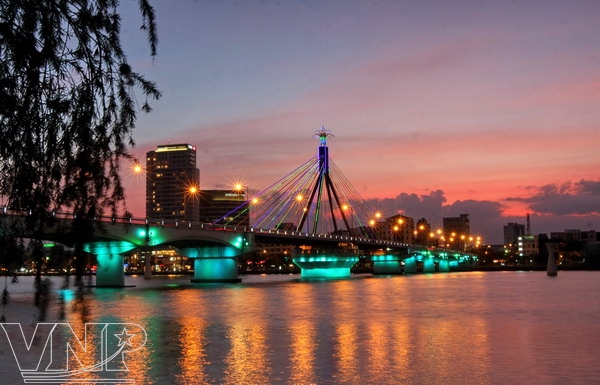
Han River Swing Bridge, a symbol of Da Nang. Photo: Thong Thien
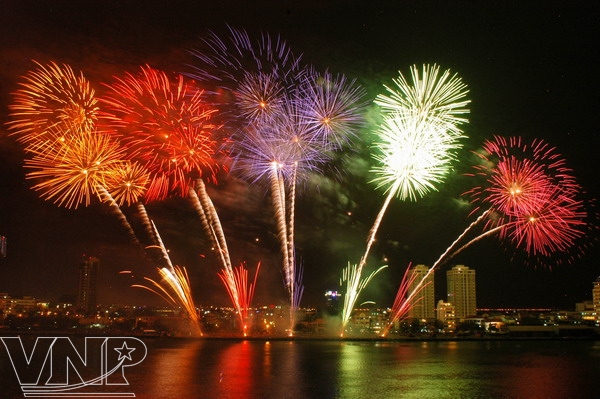
Da Nang during the international fireworks competition. Photo: Cong Dien
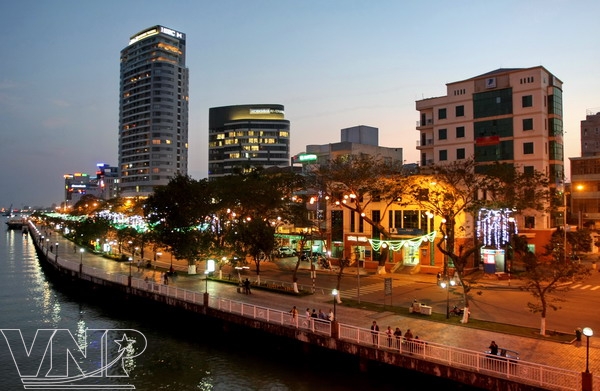
Da Nang glistens on the banks of the Han River. Photo: Thong Thien
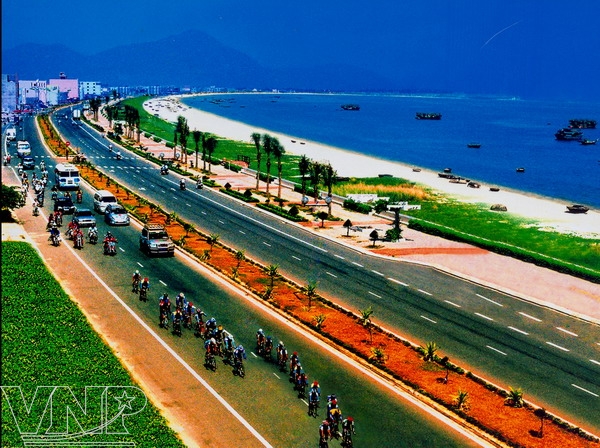
Nguyen Tat Thanh Road, one of the beautiful coastal roads in Da Nang. Photo: Ngoc Sam
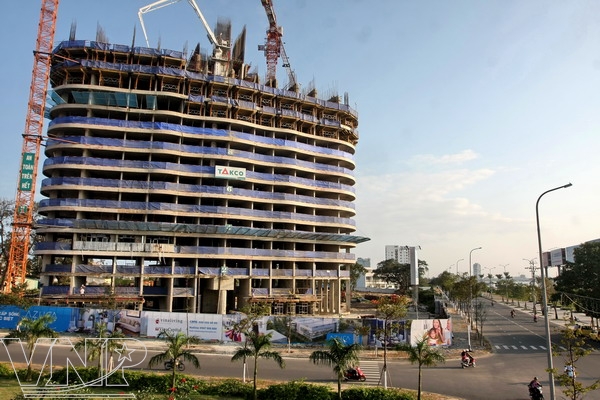
More and more projects are under construction in Da Nang. Photo: Thong Thien
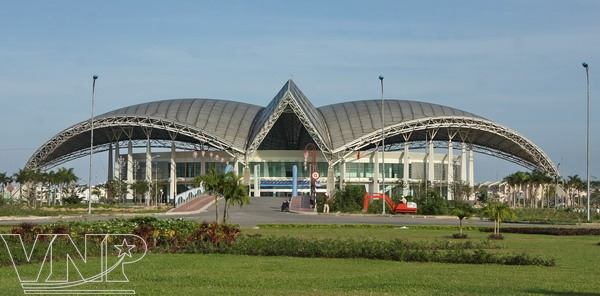

The sports complex of Tien Son. Photo: Thong Thien

Furama Resort. Photo: Thong Thien
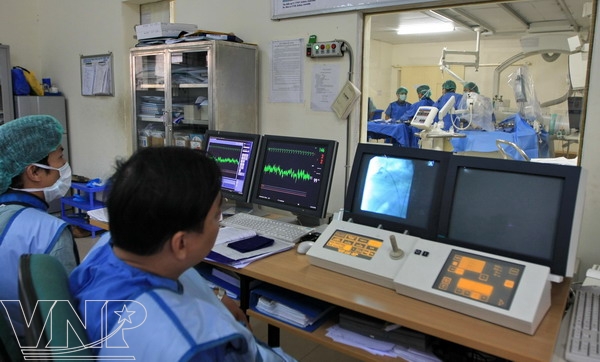
A hi-tech operating room in Da Nang General Hospital. Photo: Thong Thien

One of the new urban areas in Da Nang. Photo: Thong Thien |
After the South was liberated in 1975, Da Nang embarked on resolving the aftereffects of war, by stabilizing the people’s life and restoring and rebuilding the city.
The work of rebuilding the city had many difficulties due to the heavy consequences of the war. It was not until 20 years later, in 1996 that Da Nang began to experience remarkable changes after a decision was made. Under this decision, the city was separated from the then Quang Nam-Da Nang Province and became a centrally-governed city.
In 2000, the Han River Bridge, the first and sole swing bridge in Vietnam, was inaugurated, which ushered in a new development period for the city. The bridge has become a symbol of pride for Da Nang residents. However, there were still difficulties in providing houses for the people. The city authorities quickly began to settle the problem by providing houses for poor people in the areas of Hai Chau, Tho Quang, Thac Gian Lake and Nai Hien Dong. Before the arrival of the lunar New Year Holidays in 2005, more than 300 households in Nai Hien Dong, near the Han River estuary, were very happy when they were provided with new houses.
Never before has Da Nang developed as strongly as it is doing today. With decisiveness and unity together with sensible urban planning strategies, the local authorities and people have turned Da Nang into a first-class modern and civilized city in Central Vietnam, which many other localities in the country dream of.
Visiting Da Nang today people cannot help being astonished by the image of a strongly developing city on the coast of the East Sea. Now, besides the swing bridge over the Han River, the city has built modern bridges, such as the Thuan Phuoc, Hoa Xuan and Cam La. By 2013, the construction of the Rong Bridge, a magnificent and superb bridge over the Han River will be completed, symbolizing the strong development of Da Nang during the integration period.
Da Nang today is also well-known for its large, beautiful and clean roads and busy urban areas. All works have been comprehensively planned, taking into account the development factors in accordance with time. Visitors to the city will enjoy the large coastal roads, tranquil streets shaded by green trees and romantic parks on the banks of the Han River.
With its existing strengths, Da Nang plans to continue building and developing the city in the direction of industrialization and services with high scientific and technological quality in the coming years. It is aiming to make the city a leading economic, technological, service and tourist centre in Central Vietnam.
Paradise near the coast
Located in the middle of Central Vietnam, Da Nang faces the sea and backs up to the mountains. This is an outstanding feature in its geographical position. The salient potential of the city is seaside tourism and mountain and forest discovery tourism.
Considered “the city lying on the side of the East Sea” Da Nang has over 30km of coastline stretching from the foot of the Hai Van Pass to Non Nuoc in Ngu Hanh Son Ward. Along the coastline there are many beautiful beaches, such as Nam O, Xuan Thieu, Thanh Binh, Tien Sa, Son Tra, My Khe, Bac My An and Non Nuoc. The beaches in Da Nang are famous for their beauty, gentle waves and clear, blue water year round. Shielded by the Hai Van Pass in the north, Da Nang has warm sunny weather throughout the year, very suitable for swimming in the sea and playing water sports.
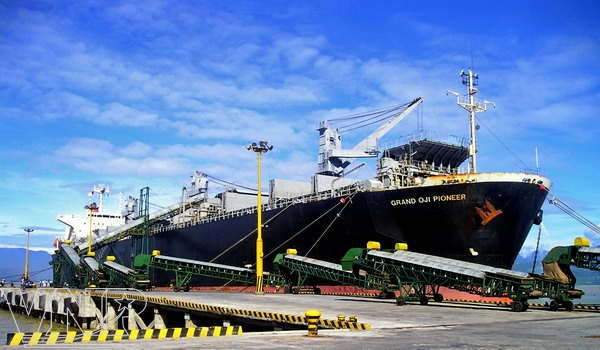
Da Nang has deep-water sea ports, very favourable for economic and tourist development. Photo: Thanh Phuong

The leather shoe industry in Da Nang has developed strongly. Photo: Thong Thien
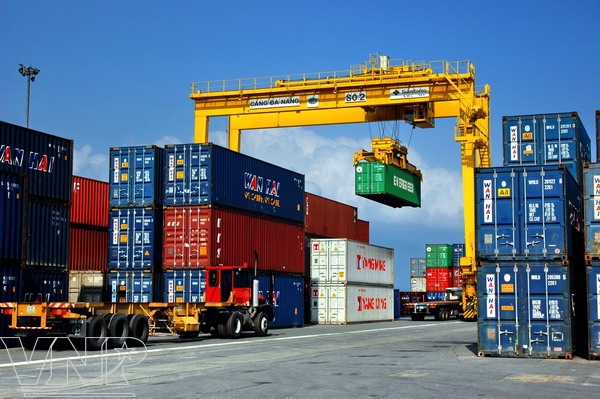
Handling containers at Tien Sa Port in Da Nang. Photo: Cong Dien

An international cruise ship lands at Tien Sa Port. Photo: Le Hai

Every year, Da Nang receives tens of thousands of tourists who visit the city by ship. Photo: Le Hai

Enjoying a motorboat ride at one of Da Nang’s beaches. Photo: File of Furaga
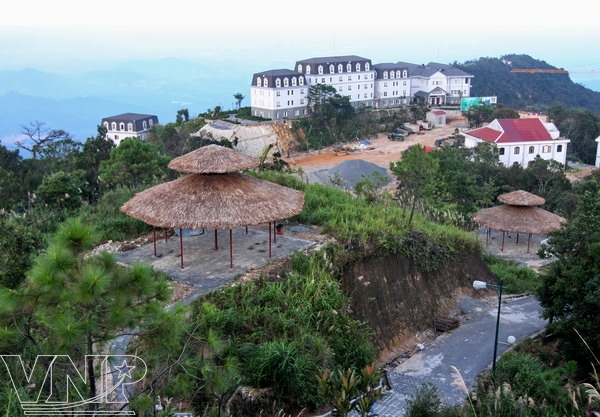
Luxurious villas on Ba Na Mountain. Photo: Thong Thien

Health resorts and beautiful beaches in Da Nang are famous throughout the world. Photo: Dinh The Anh |
In 2005, Forbes Magazine, the leading economic magazine in the United States, selected My Khe Beach in Da Nang as one of the six most attractive beaches in the world. In early 2010, the Sunday Herald Sun, an Australian newspaper, also put My Khe Beach, on the list of the top 10 best beaches in Asia.
Da Nang knew how to bring into full play its sea tourism strength. It has built beautiful coastal roads, such as Hoang Sa, Truong Sa and Nguyen Tat Thanh. Along these roads there are resorts, beaches, parks, villas and high-grade apartments. Sea-encroaching projects are being implemented, bringing to Da Nang a new image of a modern tourism city of international stature.
Coming to Da Nang, visitors can enjoy the superb beauty of Ba Na Mountain covered by clouds all year round at a height of 1,487m above sea level. Discovered by French explorers in 1901, it was a famous health resort in Indochina under French rule. Today, apart from a system of ancient villas of French architecture, Ba Na tourism infrastructure has developed with many luxurious hotels and a state-of-the-art system of cable cars that brings tourists to discover the beauty of the primeval forests.
About 10km northeast of downtown there is the Son Tra Nature Reserve. From Son Tra Mountain, visitors can see Da Nang with the Han River sparkling in the sunshine, many high-rise buildings near the seaside and beautiful beaches. At night, the city glistens in the glow of millions of lights. If they are lucky to visit the city when the international firework competition is held, they can witness the splendid firework performance over the Han River. Son Tra Nature Reserve also has Linh Ung Pagoda where there is a 67m-high statue of the Goddess of Mercy, looking over the East Sea who seems to protect the ships at sea.
About 8km southeast of downtown is another attraction, Ngu Hanh Son. It is situated in a vast area of white sand in Hoa Hai Commune of Hoa Vang District. Ngu Hanh Son consists of five karst mountains which were named Kim Son, Moc Son, Thuy Son, Hoa Son and Tho Son by King Minh Mang (1791-1841). On the peaks of these mountains there are picturesque pagodas and caves amidst beautiful scenery. At the foot of Ngu Hanh Son there is the stone carving village of Non Nuoc which is known for its unique and delicate stone carved products. Near Ngu Hanh Son is Non Nuoc tourist area with lovely beaches and calm, blue, clear water, and forests of green poplar trees.
Da Nang is surrounded by three world cultural heritage sites that have been recognized by UNESCO. They are the old imperial city of Hue, the ancient town of Hoi An and My Son Sanctuary (in Quang Nam Province). This highlights the role of the city in the region. It is the place to receive tourists, provide services and is a transit location. This has created strength in the tourist development strategies of the local and neighbouring provinces as well.
With the above-mentioned attributes Da Nang is one of four large tourist centres of the country, including Hanoi, Ho Chi Minh City and Hue. It a focal area in the strategy of the Vietnamese economic-tourist planners who want to turn the city into a leading tourist centre of the entire central area of Vietnam.

















